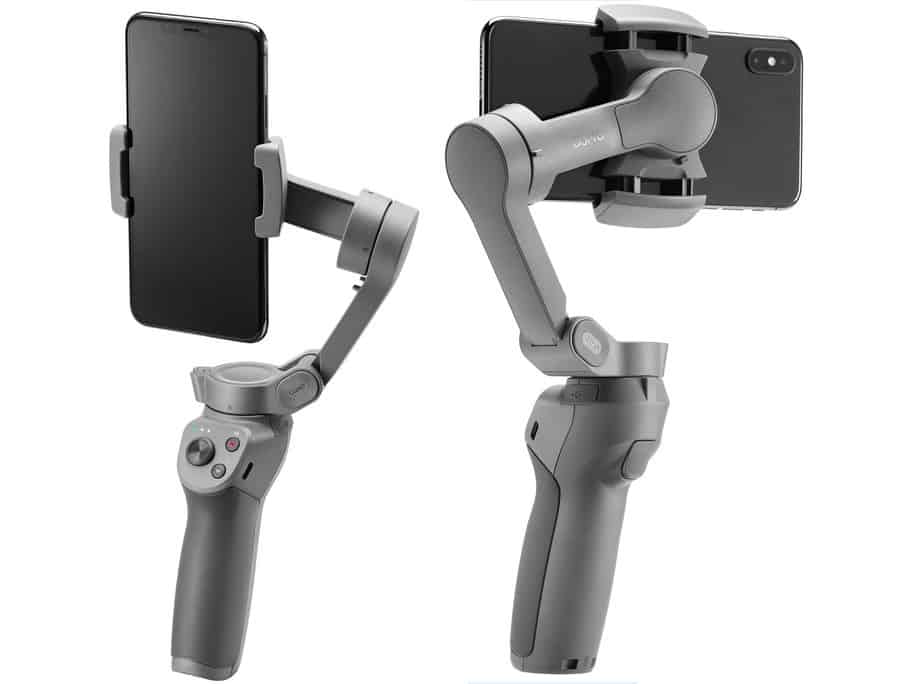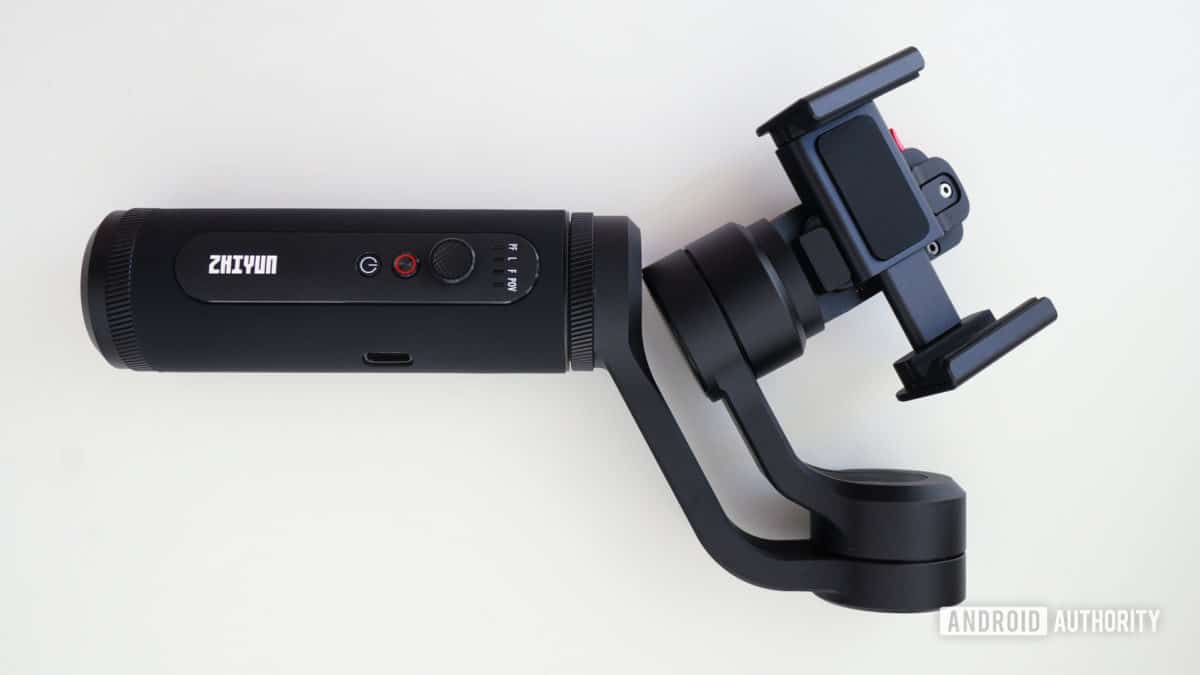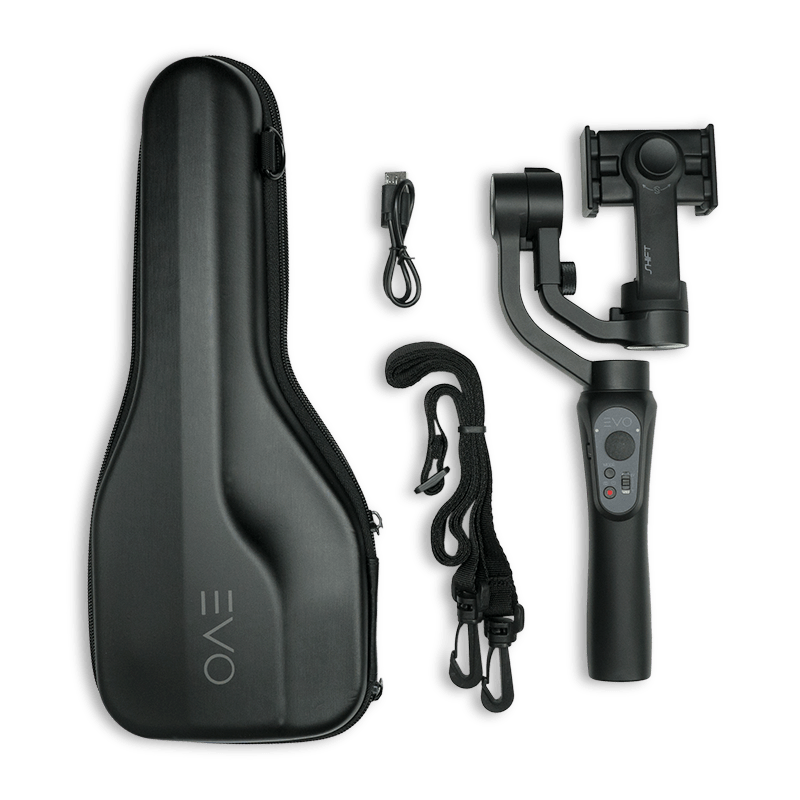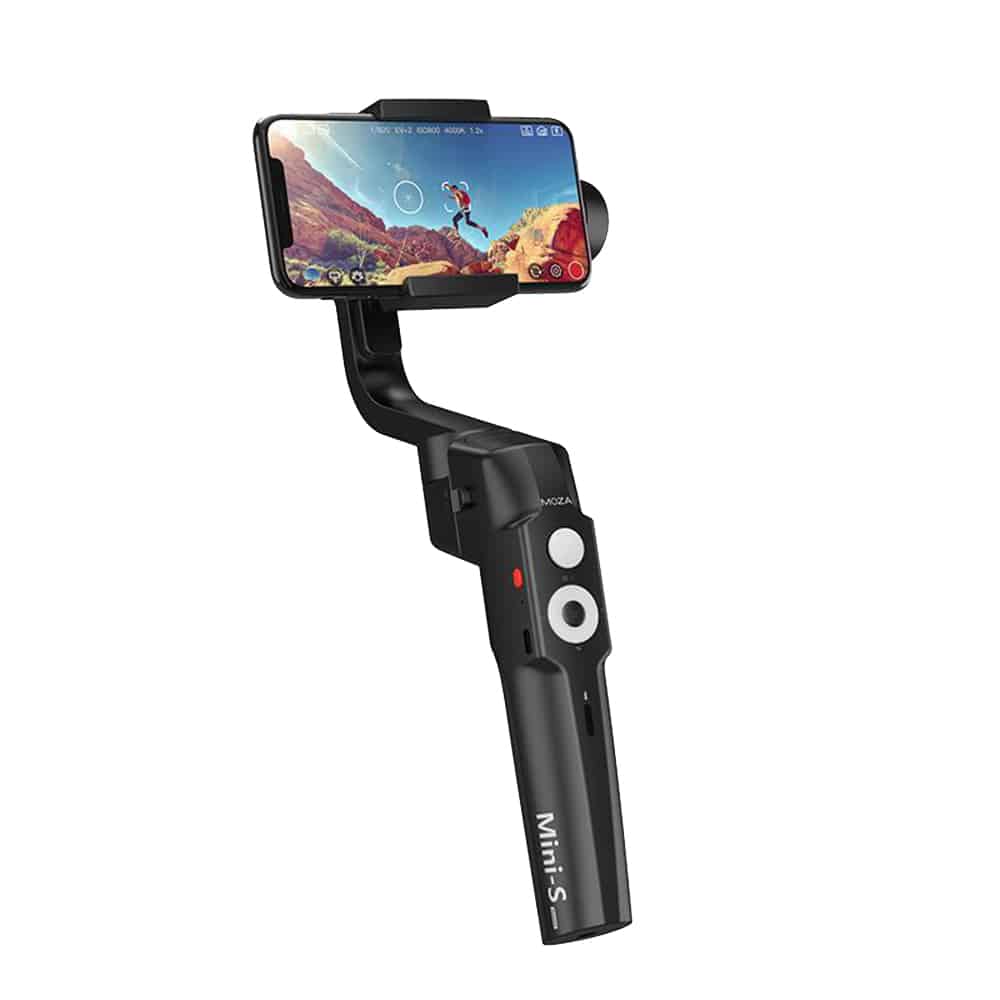Mobile phones are now very useful when it comes to stabilizing video with OIS (optical image stabilization) and EIS (electronic image stabilization), however, they still cannot do better than the best smartphone gimbals out there. The reality is that hand-holding a device while you record comes with unexpected movements and trips, so you must be stable enough. For the best options out there, see our list of 6 Best Smartphone Gimbals To Buy:
1. DJI Osmo Mobile 3:

This is one of the best smartphone gimbals you will find in the market. The fact that it comes from a reliable company makes it very trustworthy too.
Must Read: The Ultimate Guide to Buying a Drone
It has an amazing quality-to-cost ratio and it is more foldable than several options on this list. Its features include 3-axis stabilization, extensive controls, and brilliant 15-hour battery life.
2. Freefly Movi Cinema Robot:

This one is for professionals and it actually helps with things that would normally need the services of a crew. It has a strong build and it comes with a unique design. Its size takes care of stability and its tech is also used for Hollywood movies.
3. Zhiyun Smooth Q2:

This is a brilliant option for anyone who is searching for a balance between price and quality.
Must Read: 7 Best Monopods For Photography 2020
It comes with a decent aluminum build, a long 17-hour battery life, 3-axis stabilization, a lightweight body, and lots of shooting modes.
4. Evo Shift:

The Evo shift is yet another member of our list of best smartphone gimbals to buy. one of the best smartphone gimbals you can get for an affordable price. It works beautifully and its build quality is highly commendable.
Must Read: Best Android Photography Apps
Its amazing features include 3-axis stabilization, lots of manual control buttons, and up to 10 hours of battery life. It also charges your smartphone while you use it.
5. Hohem Isteady Mobile Plus:

Still on the topic of best smartphone gimbals to buy. This device possesses a 3-axis stabilization, a 12-hour battery life, and it weighs just 200g. The upgraded sport mode provides enhanced performance and its application possesses several modes, including different timelapse styles, slow motion, beauty retouching, and so on.
6. Moza Mini-S:

This is one of the least costly options on this list, but it is not cheap. It features 3-axis stabilization, a design that folds very tightly, manual controls, and very special design. Its battery life is not that great but 5 hours is still enough for some people to work magic. Shooting modes range from timelapse, vertigo, portrait mode, hyper-lapse, slow-motion, and so on.
More Information About Smartphone Gimbal:
A gimbal is a pivoted support that allows the rotation of an object about a single axis. A set of three gimbals, one mounted on the other with orthogonal pivot axes, may be used to allow an object mounted on the innermost gimbal to remain independent of the rotation of its support (e.g. vertical in the first animation).
For example, on a ship, the gyroscopes, shipboard compasses, stoves, and even drink holders typically use gimbals to keep them upright with respect to the horizon despite the ship’s pitching and rolling.
The gimbal suspension used for mounting compasses and the like is sometimes called a Cardan suspension after Italian mathematician and physicist Gerolamo Cardano (1501–1576) who described it in detail.
However, Cardano did not invent the gimbal, nor did he claim to. The device has been known since antiquity, first described in the 3rd c. BC by Philo of Byzantium, although some modern authors support it may not have a single identifiable inventor.
The gimbal was first described by the Greek inventor Philo of Byzantium (280–220 BC). Philo described an eight-sided ink pot with an opening on each side, which can be turned so that while any face is on top, a pen can be dipped and inked — yet the ink never runs out through the holes of the other sides.
This was done by the suspension of the inkwell at the center, which was mounted on a series of concentric metal rings so that it remained stationary no matter which way the pot is turned.
In portable photography equipment, single-axis gimbal heads are used in order to allow a balanced movement for camera and lenses.
This proves useful in wildlife photography as well as in any other case where very long and heavy telephoto lenses are adopted: a gimbal head rotates a lens around its center of gravity, thus allowing for easy and smooth manipulation while tracking moving subjects.



